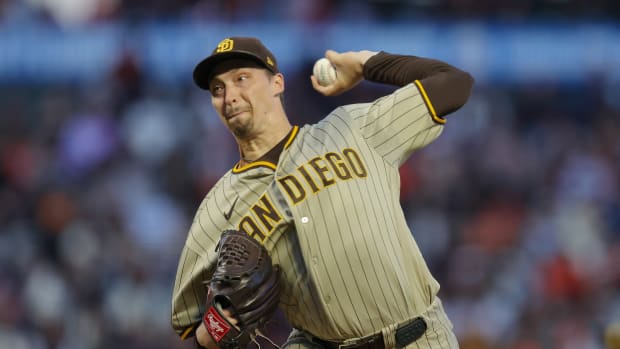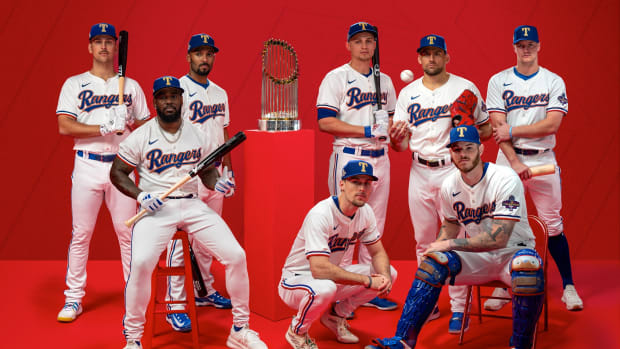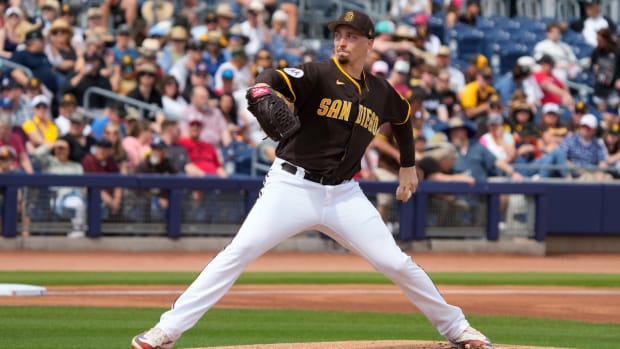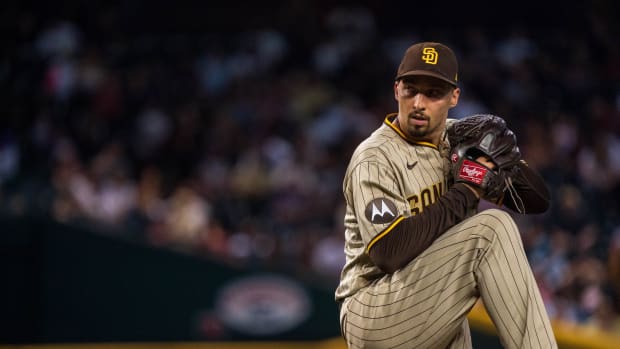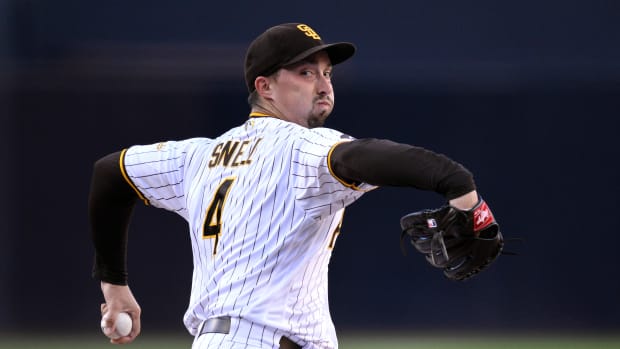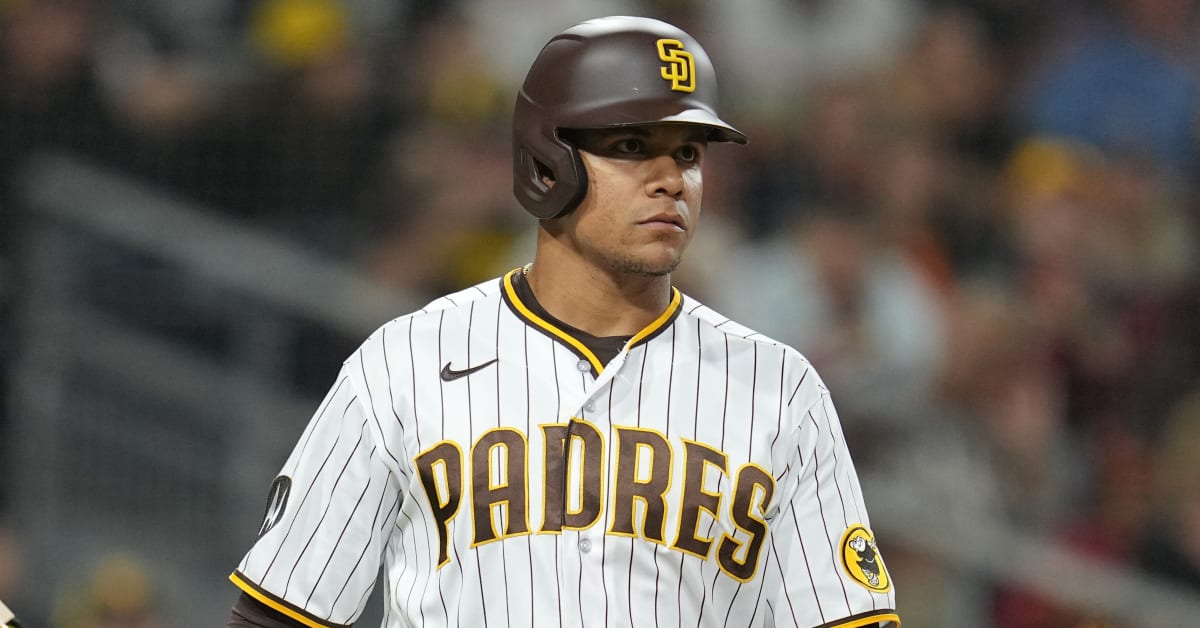
Padres’ Imminent Juan Soto Trade Ends Their Era of High Expectations
The great World Series push in San Diego and the wild spending it engendered are officially over. It ended Wednesday as the Padres moved to the brink of trading outfielder Juan Soto to the Yankees for four pitchers. The all-in, damn-the-budget approach was wildly successful at the gate—the Padres increased their attendance 37% from 2019—but a noble failure on the field.
From 2020, when the late Peter Seidler took over as club chairman, to last season, the Padres increased their payroll 74%, from a CBT number of $170 million to $296 million. It was not sustainable in that market. But unlike the 1998-2002 Diamondbacks, who raised their payroll 193%, the Padres could not seize their first title before the bubble inevitably burst.
In this four-year “run,” San Diego never won more than 89 games. It hasn’t won more than 90 games in 27 years.
Now it’s time for the retreat you knew was coming. The payroll will sink closer to $200 million. Besides their best hitter (Soto), the Padres are also likely to lose their closer (Josh Hader), their Cy Young Award winner (Blake Snell), their most used pitcher (Nick Martinez) and four pitchers who started 91 of their 162 games (Snell, Seth Lugo, Michael Wacha and Martinez).

Soto is seemingly a part of the mass exodus from San Diego with a heavily rumored trade to the Yankees in the works.
Ray Acevedo/USA TODAY Sports
The 2023 Padres will stand as one of the most disappointing teams of last season because they had played in the previous NLCS. Truth is, they dropped only by seven wins from the previous season, while the Yankees (-17), White Sox (-20), Cardinals (-22) and especially Mets (-26) were bigger flops.
What happened to the ’23 Padres and the great World Series push? There’s been a lot of carping about “chemistry,” and that has some truth to it. Start at the top. The most important bond in baseball—between the manager and general manager—was troublesome, which became apparent when GM A.J. Preller allowed Bob Melvin to leave while under contract for a division rival, the Giants.
Mike Shildt, a coach last season and named as the replacement for Melvin, sees expectations as a root cause. The Padres, with stars added from here and there like someone winging a stew without a recipe, had not coalesced enough to properly handle the expectations, he says.
“There was lot of talk about the World Series,” he says. “And rightfully so with the high-end talent. But you have to have enough culture in place to be able to handle that. It just seemed that when we weren’t meeting expectations early, the tendency was to develop silos rather than have the experience together to meet them as a group. And I’m talking about playing good fundamental baseball, like situational hitting.”
The Padres hit .241 with runners in scoring position, 26th in MLB. They left runs on the board by not moving runners, a flaw that almost always burned them. They were 9–23 in games decided by one run. They were 2–12 in extra innings.
Shildt, a traditional, smart baseball man who is getting his deserved second chance after his abrupt ouster in St. Louis, says he will make situational hitting a major emphasis in spring training.
The Padres still have high-end talent: Manny Machado, Xander Bogaerts, Fernando Tatis Jr., Yu Darvish and Joe Musgrove, but they face an uphill climb in a loaded NL West. At least this time they will not have to worry about the weight of expectations.

Kimbrel will have a prime opportunity to move into the top five of the all-time saves leaderboard next season in Baltimore—and perhaps win his second World Series.
Bill Streicher/USA TODAY Sports
The Orioles got their closer and it’s the guy who had the best stuff of any National League closer last season. No, it’s not Josh Hader.
It’s 35-year-old Craig Kimbrel, who will pitch for his seventh team in the past eight years. Kimbrel agreed to a one-year contract with a club option with the Orioles that will pay him $13 million, according to a source familiar with the deal.
The last impression of Kimbrel was taking back-to-back losses for Philadelphia in the NLCS, allowing Arizona back in a series the Diamondbacks would win. But no team bases its evaluation on a player on the tiny sample of two games.
With Félix Bautista lost for the year because of elbow surgery, Baltimore needed a closer. Hader made the most sense, but there was no way the Orioles were getting close to the Edwin Diaz contract ($102 million over five years). Kimbrel provided a short-term, cheaper solution. And when they dove into the numbers, here is what the Orioles found:
- Kimbrel’s Stuff+ rating, a Fangraphs measurement of the physical property of pitches, was the highest of any NL closer (125) and behind only Lucas Sims (131) among all NL relief pitchers with at least 60 innings. Josh Hader checked in at 112.
- Kimbrel posted a 1.86 ERA with J.T. Realmuto behind the plate and 8.04 when he threw to Garrett Stubbs.
- He gave up 11 home runs, but only seven of those would have been home runs at Camden Yards, the Orioles’ home park with the distant, high wall in left field. Baltimore calculated that his 3.26 ERA would have been “crazy lower” with Camden Yards as his home park, according to a source.
- Kimbrel’s two worst seasons, 2020 and 2022, both occurred after abnormal spring trainings (because of COVID and the lockout, respectively).
Kimbrel has his flaws. He walks too many batters (10.1% last year) and allows stolen bases too easily (12 for 12 last year, 23 out of 25 since 2020). But if Camden Yards prompts him to attack more with strikes, he still has the elite stuff to dominate.































